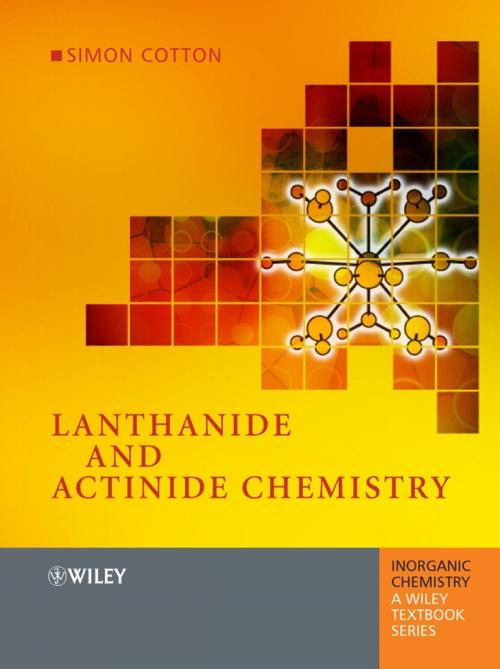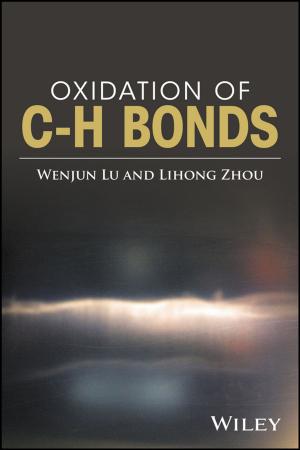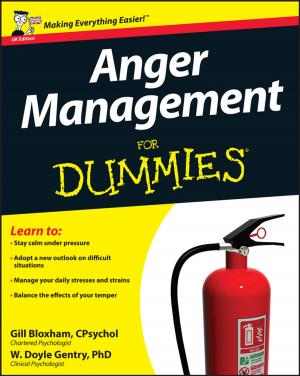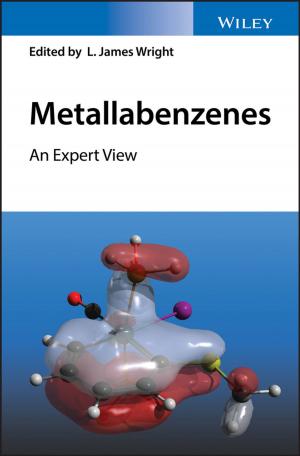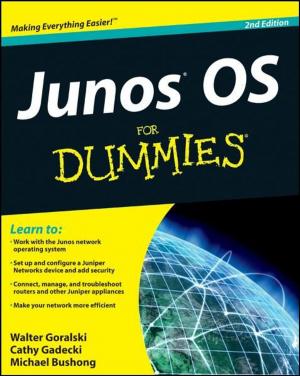| Author: | Simon Cotton | ISBN: | 9781118681367 |
| Publisher: | Wiley | Publication: | March 15, 2013 |
| Imprint: | Wiley | Language: | English |
| Author: | Simon Cotton |
| ISBN: | 9781118681367 |
| Publisher: | Wiley |
| Publication: | March 15, 2013 |
| Imprint: | Wiley |
| Language: | English |
The only introduction into the exciting chemistry of Lanthanides and Actinides.
- The book is based on a number of courses on "f elements"
- The author has a long experience in teaching this field of chemistry
- Lanthanides have become very common elements in research and technology applications; this book offers the basic knowledge
- The book offers insights into a vast range of applications, from lasers to synthesis
The Inorganic Chemistry: A Textbook series reflects the pivotal role of modern inorganic and physical chemistry in a whole range of emerging areas, such as materials chemistry, green chemistry and bioinorganic chemistry, as well as providing a solid grounding in established areas such as solid state chemistry, coordination chemistry, main group chemistry and physical inorganic chemistry.
Lanthanide and Actinide Chemistry is a one-volume account of the Lanthanides (including scandium and yttrium), the Actinides and the Transactinide elements, intended as an introductory treatment for undergraduate and postgraduate students. The principal features of these elements are set out in detail, enabling clear comparison and contrast with the Transition Elements and Main Group metals.
The book covers the extraction of the elements from their ores and their purification, as well as the synthesis of the man-made elements; the properties of the elements and principal binary compounds; detailed accounts of their coordination chemistry and organometallic chemistry, from both preparative and structural viewpoints, with a clear explanation of the factors responsible for the adoption of particular coordination numbers; spectroscopy and magnetism, especially for the lanthanides, with case studies and accounts of applications in areas like magnetic resonance imaging, lasers and luminescence; nuclear separations and problems in waste disposal for the radioactive elements, particularly in the context of plutonium.
Latest developments are covered in areas like the synthesis of the latest man-made elements, whilst there is a whole chapter on the application of lanthanide compounds in synthetic organic chemistry.
End-of-chapter questions suitable for tutorial discussions are provided, whilst there is a very comprehensive bibliography providing ready access to further reading on all topics.
The only introduction into the exciting chemistry of Lanthanides and Actinides.
- The book is based on a number of courses on "f elements"
- The author has a long experience in teaching this field of chemistry
- Lanthanides have become very common elements in research and technology applications; this book offers the basic knowledge
- The book offers insights into a vast range of applications, from lasers to synthesis
The Inorganic Chemistry: A Textbook series reflects the pivotal role of modern inorganic and physical chemistry in a whole range of emerging areas, such as materials chemistry, green chemistry and bioinorganic chemistry, as well as providing a solid grounding in established areas such as solid state chemistry, coordination chemistry, main group chemistry and physical inorganic chemistry.
Lanthanide and Actinide Chemistry is a one-volume account of the Lanthanides (including scandium and yttrium), the Actinides and the Transactinide elements, intended as an introductory treatment for undergraduate and postgraduate students. The principal features of these elements are set out in detail, enabling clear comparison and contrast with the Transition Elements and Main Group metals.
The book covers the extraction of the elements from their ores and their purification, as well as the synthesis of the man-made elements; the properties of the elements and principal binary compounds; detailed accounts of their coordination chemistry and organometallic chemistry, from both preparative and structural viewpoints, with a clear explanation of the factors responsible for the adoption of particular coordination numbers; spectroscopy and magnetism, especially for the lanthanides, with case studies and accounts of applications in areas like magnetic resonance imaging, lasers and luminescence; nuclear separations and problems in waste disposal for the radioactive elements, particularly in the context of plutonium.
Latest developments are covered in areas like the synthesis of the latest man-made elements, whilst there is a whole chapter on the application of lanthanide compounds in synthetic organic chemistry.
End-of-chapter questions suitable for tutorial discussions are provided, whilst there is a very comprehensive bibliography providing ready access to further reading on all topics.
